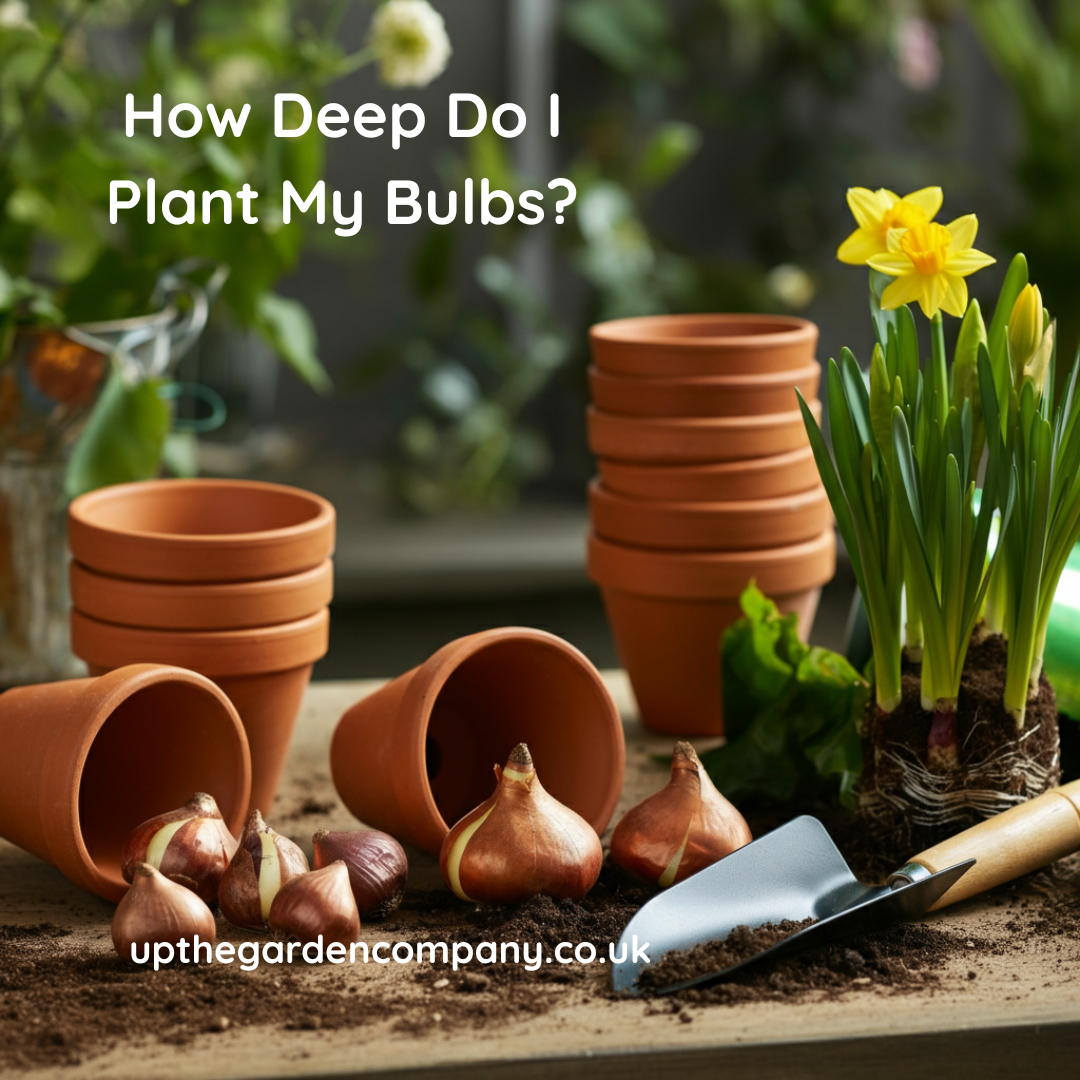Planting bulbs in your garden is one of the most rewarding ways to bring vibrant colours and seasonal blooms to your outdoor space. Whether you’re a seasoned green thumb or just starting your gardening adventure, knowing how deep to plant your bulbs is essential for their growth, health and success.
Why Does Planting Depth Matter?
Planting bulbs at the correct depth is crucial for several reasons:
- Proper Growth: Bulbs planted too shallow may not anchor themselves well, leading to weak stems or deformed flowers. They could also dry out more quickly.
- Protection from Elements: Planting at the right depth protects your bulbs from harsh winter frost, helping them thrive through colder weather.
- Prevention of Animal Damage: Planting deeper reduces the risk of bulbs being dug up by squirrels, rodents or other wildlife.
- Seasonal Timing: Depth determines how well a bulb senses temperature changes, which affects when it will sprout. Correct depth means you’ll get beautiful blooms at just the right time.
Now that you know why depth is important, let’s get into the details. Here’s how to plant your bulbs effectively.
How to Plant Bulbs Correctly
Step 1: Prepare Your Soil
Choose a spot with well-drained soil that gets plenty of sunlight. Most bulbs prefer rich, loose soil, so add compost or manure if needed to improve its structure and nutrient content. Avoid areas with overly compacted or waterlogged soil, as bulbs can rot if they stay too wet.
Step 2: Understand Planting Depth
A general rule of thumb is to plant bulbs at a depth of two to three times their height. For instance, if your bulb is 5 cm tall, plant it in a hole that’s 10 to 15 cm deep. However, specific types of bulbs have recommended depths, which we’ll cover shortly.
Step 3: Use the Right Tools
A garden trowel, bulb planter, or even a dibber works well for digging uniform holes. If planting several bulbs in a group, digging a trench can make the process easier.
Step 4: Point Upright
Most bulbs have a pointed end—that’s the side facing up! If you’re unsure, plant the bulb on its side; the plant will adjust and grow upwards.
Step 5: Cover and Water
Gently fill the hole with soil, tamp it down lightly to eliminate air pockets and water thoroughly. This helps the bulbs settle and activates root growth.
Now, let’s look at the specific depths for various types of bulbs to ensure optimal growth.
Ideal Planting Depths for Popular Bulbs
20 cm – Allium, Lily, Fritillaria
These tall bloomers need to anchor themselves deep into the soil to support their striking flowers. Their dramatic presence in your garden makes the extra depth worth it.
15 cm – Daffodil
A springtime classic, daffodils perform best when planted deeper. This protects them from frost and ensures a steady display of cheerful yellow blooms.
12 cm – Tulip
Tulips benefit from medium-depth planting for solid rooting and to reduce the risk of being disturbed by animals. Planting at 12 cm also helps stagger their growth and blooming time.
10 cm – Hyacinth
Known for their fragrant, compact blooms, hyacinths thrive at 10 cm, where their roots can spread effectively while staying insulated from cold weather.
8 cm – Muscari (Grape Hyacinth), Ranunculus
Muscari and ranunculus are small but mighty, bringing delightful colour to borders or containers. At 8 cm deep, you’ll ensure these bulbs thrive while creating natural drifts of blooms.
7 cm – Anemone
Perfect for adding charm to rockeries and garden edges, anemones require careful placement. Their shallow planting ensures they bloom vibrantly.
5 cm – Galanthus (Snowdrop), Crocus, Iris
The smallest bulbs like snowdrops, crocuses, and dwarf irises need minimal digging. Place them at this shallower depth for early spring bursts of colour.
Bulb Planting Tips for Success
- Plant in Groups:
Plant bulbs in clusters rather than single rows for a more natural and visually striking display.
- Mark Your Planting Spots:
Use plant markers to remember where you’ve planted your bulbs, especially in areas of mixed planting.
- Water Wisely:
While newly planted bulbs need watering to encourage root growth, avoid overwatering as this can cause rot.
- Time Planting Right:
Most spring bulbs should be planted during autumn, before the first frost sets in. However, double-check the planting schedule for specific bulb types.
Getting Creative with Bulb Planting
You can experiment with layering bulbs for a dynamic display that blooms in succession. This method, sometimes called “lasagne planting,” involves planting bulbs at different depths in the same container or bed. For example:
- Plant alliums at the deepest level (20 cm).
- Add a middle layer of daffodils (15 cm).
- Top it off with crocuses (5 cm) for an early burst of colour.
This technique creates stunning multi-layered arrangements with minimal effort.
Bringing It All Together
When it comes to successfully planting bulbs, depth matters more than you might think. Getting it right ensures healthier plants, vibrant blooms and a garden you can enjoy across the seasons. By following this guide, you’ll be well on your way to creating a thriving, colourful garden.
Now that you know how to plant your bulbs like a pro, it’s time to grab your trowel and start digging. Don’t forget to mark your calendar for the bloom times of each bulb type, so you’re ready for the stunning results!
Happy gardening!
Further Reading: Tulips – Shine Bright like a Tulip, The Snowdrop: A Symbol of Hope and Resilience, The Daffodil: A Symbol of Spring & Renewal, Crocuses: Nature’s Painted Jewels
